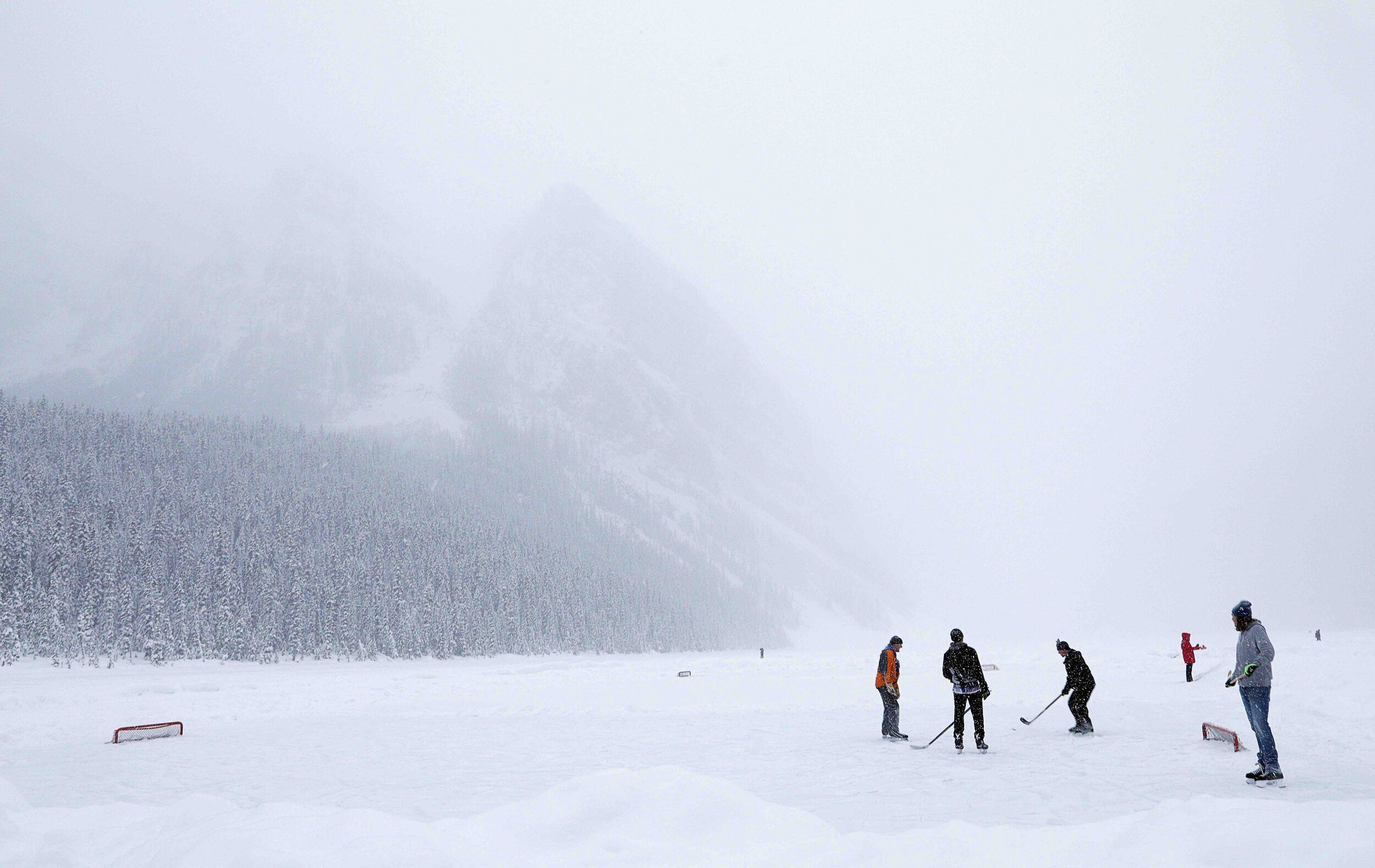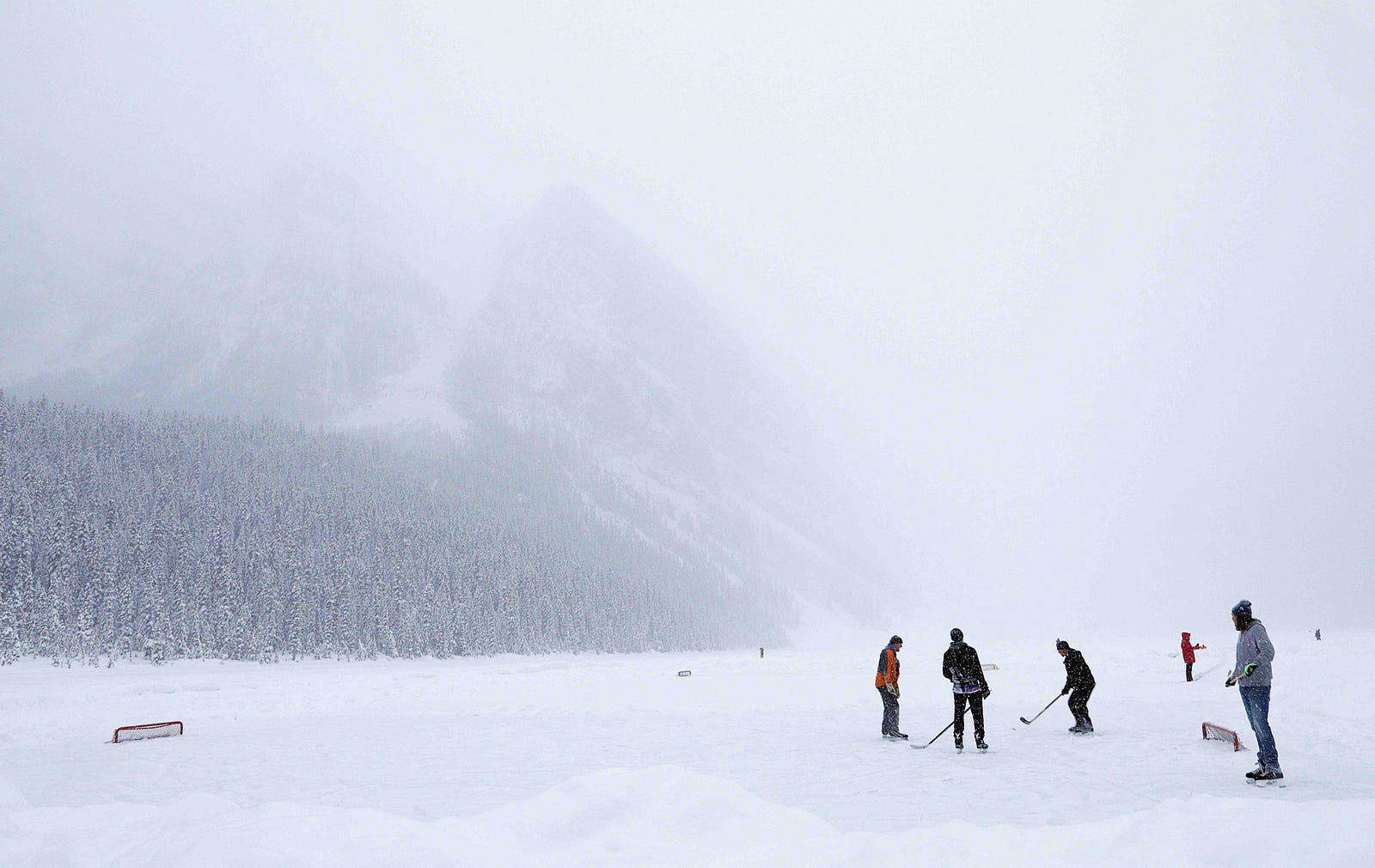
‘We don’t want this in our national parks’: Olympics in Banff debated once again
Calgary first pitched the idea in the 1960s.
When Calgary hosted the Winter Games in 1988, Banff National Park was off-limits for Olympic events, period.
Today, the park is being considered as a possible site for downhill skiing if Calgary hosts a 2026 Games.
The Calgary bid committee proposed reusing Nakiska Ski Area in Kananaskis for most skiing and snowboarding, but proposed adding Lake Louise for alpine speed events. It’s a recommendation that has reopened debate over whether or not the Olympics belong in Banff National Park.
Conservationists warn against expanding into the ecologically sensitive region in and around the park.
“One of the things that happens with these things is a sort of gold rush mentality… people think, ‘We’ve got to make this happen,’” said Kevin Van Tighem, a conservation writer and former superintendent of Banff National Park.
“It becomes a patriotism thing, like ‘why are you bringing up the environment? We’re talking about the Olympics.’”
The Banff Olympics that weren’t
Believe it or not, the debate about whether the Olympics belong in Banff has been happening for a half century, on and off.
In the 1960s, Calgary put in a bid to hold the 1972 Olympics in Banff, part of a broader effort to develop the park as a winter resort destination. The Olympic bid sparked vigorous debate about the role of national parks in Canada, and galvanized a movement.

“A lot of groups came together, and a lot of Canadians came together, rallied and said, ‘No, we don’t want this in our national parks,’” said Anne-Marie Syslak, executive director of the Canadian Parks and Wilderness Society (CPAWS) southern Alberta chapter.
More than 50 groups opposed the idea, and the fight invigorated the environmental movement in Alberta — particularly in regard to national parks.
“That’s one of the reasons why our chapter formed,” said Syslak. “Not only were they looking at plans for [increased] access in the park, but there were also plans for a large-scale infrastructure to support the Olympics.”
“I’m for one very grateful that it was recognized that we need to safeguard these places.”

Thanks in part to that battle in the 1960s, Olympic organizers steered clear of Banff in 1988. (Well, mostly—they did try, at one point, to use Lake Louise for skiing.) Instead, they held alpine events in Kananaskis, east of the park.
With Banff being suggested again, there are renewed worries that park usage and large Olympic crowds could jeopardize wildlife and habitat.
‘They will always push the boundaries’
Echoing the arguments made by conservationists 50 years ago, Syslak says national parks aren’t appropriate for the Olympics. “If you have increased disturbance, then you’re going to be impacting ecological values which will make it challenging for a whole host of things,” she said.
She explained that “indicator species” such as grizzly bears can show whether or not an entire ecosystem is doing well. And if one species is thrown off, the rest of the ecosystem will be, too.

“You can see on the public lands where you haven’t had the same legislation or policy to prioritize those values, how it’s now a huge challenge — because we do have a very disturbed landscape,” Syslak said.
Firm boundaries are necessary to protect wildlife and the environment from encroachment, she added.
“It’s like having a child. If you haven’t set the rules, or you don’t enforce the rules, then they will push. They will always push the boundaries.”
—Anne-Marie Syslak, CPAWS
Kyle Ripley, the head of the City of Calgary’s bid team, has acknowledged the need for the Banff debate to be reopened in light of the bid committee’s recommendation of Lake Louise.
Speaking to reporters last month after the IOC’s visit to Calgary, Ripley noted that Lake Louise already hosts World Cup skiing events each year. But he also pointed out that “the overlay for hosting Olympic Games is substantially larger than that of a World Cup.”
“The venue has the capacity to accommodate the overlay,” he said. “But we need to have a philosophical conversation as Albertans, as Canadians, if that venue is appropriate for an Olympic event in a national park.”
If Lake Louise is a no-go for downhill skiing, organizers will likely do what they did in 1988: look to Mount Allan, home of Nakiska.
The battle for Mount Allan in Kananaskis
Calgary’s 1988 Olympic organizers originally put forward Mount Sparrowhawk in Kananaskis as the venue for skiing. But after Calgary got awarded the bid, organizers abandoned that plan and developed Mount Allan instead, creating Nakiska.
“That became hugely controversial because Mount Allan has one of the biggest concentrations of wintering bighorn sheep in Alberta,” recalls Van Tighem.
Conservationists opposed the plan. In a 1986 analysis, wildlife scientist Brian L. Horejsi wrote that political and economic considerations were of greater importance than environmental concerns in the battle over Mount Allan.
Calgary Mayor Ralph Klein, who loved getting into it with environmentalists, was indignant when criticized by the Sierra Club regarding the Mount Allan sheep.
“It is not the perfect mountain, but perfection is not our goal,” Klein said in a defiant 1984 speech. “Our goal is fair and keen competition, a legacy for recreational skiers, and a mountain that accommodates spectators with a minimum of environmental damage — all of which Mount Allan provides.”
“I do not need the Sierra Club, or any group, to remind me of my environmental obligations.”
—Mayor Ralph Klein in 1984
In the end, says Van Tighem, the sheep herd survived and is thriving. “There was some mitigation to reduce the impact on the sheep,” he said. “For instance, right now you can’t go through the backside of Mount Allan. It’s closed for winter to give the sheep as much security as they can.”
But Van Tighem also says the Olympics can pave the way for larger projects in wildlife habitat. Nakiska, for example, also has a golf course and a hotel nearby. “These things create momentum for development,” he said.

Like the IOC of late, Van Tighem recommends reusing venues wherever possible for any future Olympics. “That’d sure be an improvement,” said Van Tighem. “It doesn’t require a whole bunch of spending and a whole bunch of new land to be developed.”
Canmore ‘rife with challenges’ post-Olympics
The town of Canmore, located just east of Banff National Park, also felt the impacts—both good and bad—from the Calgary Olympics. The Canmore Nordic Centre was built specifically to host cross-country skiing for the 1988 Games.
“There were a lot of people who ended up in Canmore [afterwards] and said, ‘Wow, this is a great place,” said Syslak. “Since 1988, the population and development in Canmore has skyrocketed.”
“That’s really significant — even though it’s outside the park boundaries — because it’s still a hugely important place, and a buffer zone for the national park.”
“Canmore is rife with challenges because of what ensued post-Olympics.”
— Anne-Marie Syslak, CPAWS
She notes that the community has seen more conflicts between humans and wildlife as a result of development—and that another Olympics would add to those pressures.
“Looking long-term,” she said, “this is going to bring more people to the area and put more pressure, more infrastructure and more strain in areas like Canmore that really are at capacity for what they can sustain.”
Megan Atkins-Baker, Simran Sachar, Cassandra Woods and Jeremy Klaszus
This story is part of Hindsight 2026, a joint project between the Sprawl and the Calgary Journal (which is produced by journalism students at Mount Royal University). We’re digging into past Olympics to evaluate whether a 2026 Winter Games in Calgary would help or hinder our city.
Support in-depth Calgary journalism.
Sign Me Up!We connect Calgarians with their city through in-depth, curiosity-driven journalism—but can't do this alone! We rely on our readers and listeners to fund our work. Join us by becoming a Sprawl member today!
